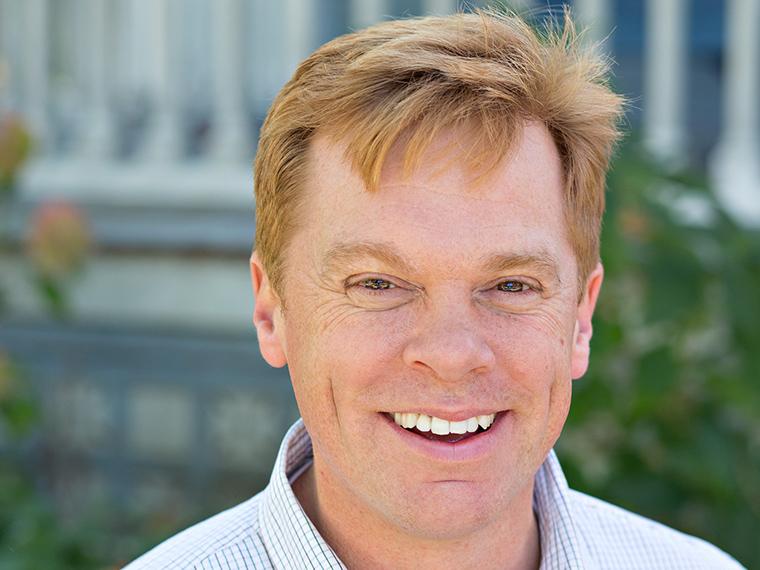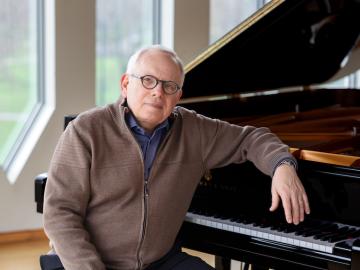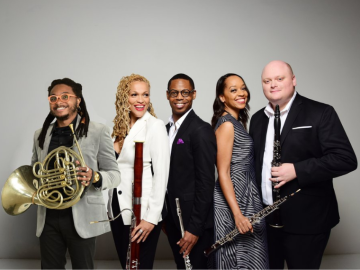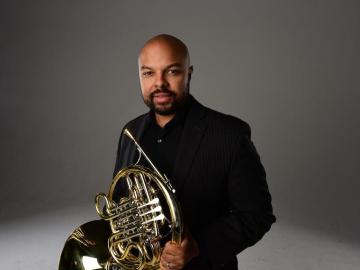Practical Magic
December 31, 2014
Amanda Nagy

Drew Wilburn has been teaching about the archaeology of ancient magic since he came to Oberlin in 2005. He is one of the few researchers in his field studying the physical objects used to practice magic in the Greco-Roman world.
While the material side of magic intersects with others’ work, “I don’t think many others are looking at it from the archaeological side,” says Wilburn, who was recently named the Irvin Houck Associate Professor in the Humanities and is chair of archaeological studies.
“There’s a long tradition of magical practice in antiquity through literature and texts written on objects. I’m one of the few, certainly, trying to understand how the objects made magic happen. It’s the physical things that informed and actualized magical practice in antiquity.”
His latest book, Materia Magica: The Archaeology of Magic in Egypt, Spain and Cyprus, was published in 2012. The book draws on objects excavated or discovered in three Mediterranean sites in the late 19th or early 20th century. Ancient magic was not a part of mainstream religious practice, but it was a force individuals relied on to make their lives better, particularly in times of crisis. “Magic was often a crisis response or a kind of insurance policy. One would go to a ritual specialist for solutions. In my book I find several categories of objects used for spells and protection.”
A common example people would associate with magic today is the amulet that was thought to ward off illness or harm. Figurines (voodoo dolls are the modern equivalent), magical bones to protect livestock or other animals from illness, and curses written out on lead sheets figure prominently in Wilburn’s book.
He says there is a substantial body of curse tablets from the ancient world, which are often in the form of strips of lead. Lead was a byproduct of silver production, and lead was also used by the Romans for water pipes. In magical practice, pieces of lead were hammered into sheets, and a magician would inscribe spells on them. The tablets could be used against opponents in court cases, rival shopkeepers, or in love spells.
Wilburn has recently begun to examine the ancient use of magic in buildings, such as floor mosaics and protective features in door frames that were believed to keep out evil spirits.
He has also embarked on a digital humanities project involving student collaborators to create a GIS map of the ancient site of Karanis in Egypt, excavated by the University of Michigan from 1924-1935. Ryan Reynolds ’14 and senior Miranda Rutherford have been instrumental in the mapping that will show the distribution of archaeological finds across the site. Karanis was a highly multicultural location in the first century AD. Greeks, Romans and Egyptians were all living side by side and worshipping the same gods in the local temples.
The Michigan excavation uncovered hundreds of thousands of objects and texts written in papyrus. Karanis also has some of the best examples of preserved houses from the ancient world. “Much of this has never been published before. We’re digitally reconstructing the excavation and history of the site.”
Rutherford taught herself some programming over the summer, and has since worked with the computer science department to take further classes to bring data onto the map and make it accessible to the rest of the world.
Rutherford began the project with some working knowledge of HTML and CSS. She spent much of the summer learning other languages and techniques, such as Javascript, in order to display an interactive map of Karanis on the project website and to link the map with a database of artifacts found at the site. She created the database with a program called PostgreSQL, which required learning a database programming language, SQL. She also set up a server to host the project website.
“Professor Wilburn has been hugely influential during my time at Oberlin, and I am so grateful for his presence in the classics department and for the opportunities he has given me to help with his research,” says Rutherford, a San Diego native who has majors in religion and classical civilizations, as well as a minor in French. “Not only has he continually encouraged me to explore subjects I never would have considered (especially computer science, through the Karanis mapping project), he has taught me that the borders of the classical world do not end at Greece and Rome.
“Projects such as the work on Karanis show that Greece and Rome did not exist in isolation, but had important connections with Egypt and the rest of North Africa, as well as the ancient Near East. Not only are these regions fascinating in and of themselves, but my work with Professor Wilburn has taught me that to truly understand Greek and Latin texts, we must also understand the culture they arose from, no matter how mundane it may seem in comparison. And sometimes, ‘mundane’ material culture really is the most exciting part of the classical world. The weird magical texts and artifacts he works with are good examples.”
Wilburn says his collaboration with computer science faculty, including Associate Professor Ben Kuperman and Assistant Professor Cynthia Taylor, is one of the great aspects of a liberal arts community. “Miranda was able to learn new skills and immediately apply them. In the humanities, we are thought of as lone scholars. At Oberlin, we incorporate students in meaningful ways. My students have become an integrated part of the research.”
Tags:
You may also like…
Peter Takács—A Half-Century Celebrated
May 4, 2024
This spring marks the official conclusion of Takács’ tenure, after an incredible 48 years of teaching. Many of his former students from around the world are set to convene for a celebratory concert in Warner Concert Hall on May 12
Oberlin Presents Grammy-Winning Imani Winds in Concert
February 28, 2024
When flutist Brandon Patrick George ’08 attended Imani Winds’ Artist Recital Series performance back in 2007, he never imagined that he would one day sit in the flute chair. “Being...
David Byrd-Marrow Appointed Horn Faculty at Oberlin Conservatory
February 7, 2024
Versatile American horn player David Byrd-Marrow has been appointed to the tenure-track horn professor position at Oberlin Conservatory. He brings an expansive range of experience and repertoire to the role.


